Background Intro:
Do you know the fact that a adult normally loses about 100 hairs every day? This is because our hair follicle fall off old hairs and then grow new hairs continually. You can understand it as the metabolism of hair.
Are you suffering from thinning hair and eagerly wondering how to treat hair loss? Don't worry, it is actually common to lose hair as you age.
Related: Welcome To The Hair Loss Community—A Warm And Inviting Family
Since early treatment can reduce the speed of hair thinning and prevent losing more hair, follow us, we believe that we can halp you regain your healthy hair as before.
Symptoms of hair loss
Widening part.
When you part your hair, you may find that your part is becoming wider. It is a sign of hair loss.
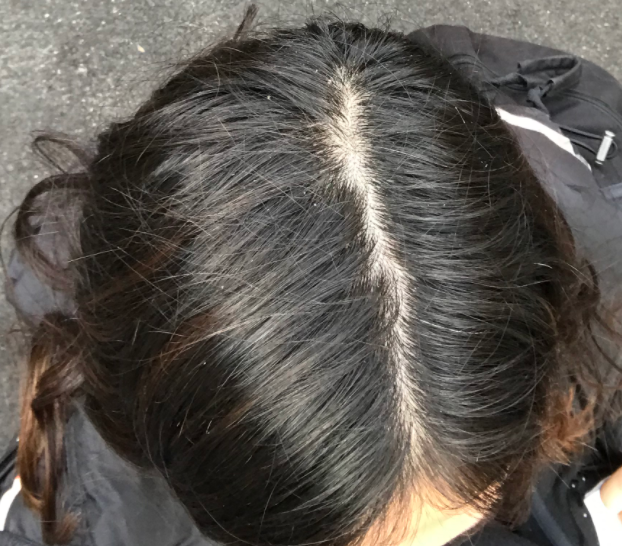
Receding hairline.
Maybe you will find that your hairline looks higher than usual one day you gets up, it may be another sign of hair loss.
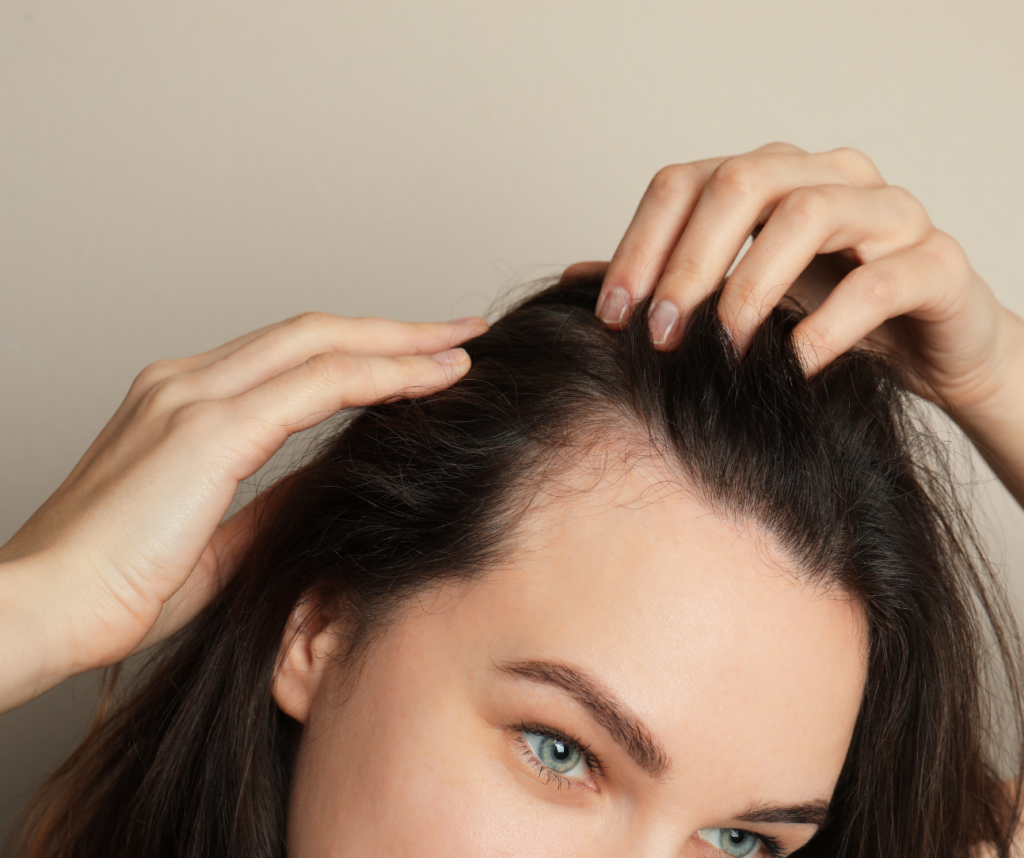
Thinning and brittle hair.
When you comb your hair in the shower, or when you comb my hair after blow-drying, you may find that your hair falls out in handfuls.
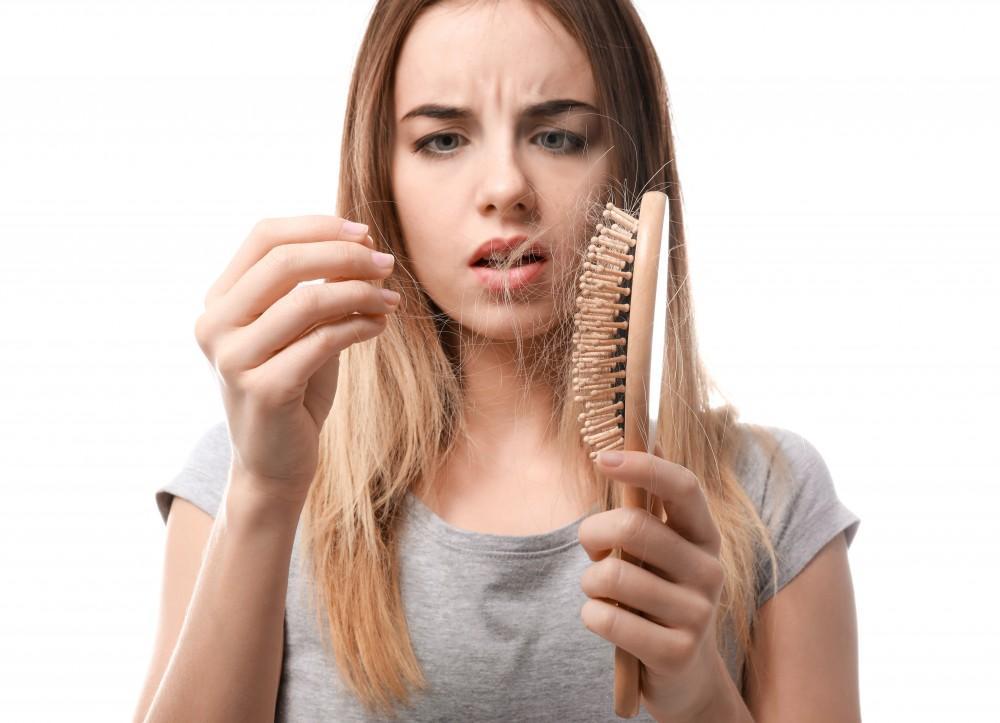
Bald patches.
Bald patches may last for months or years. The size and duration of bald patches vary. If you suffer patchy hair loss on your head, hair regrowth will begin within a few months.
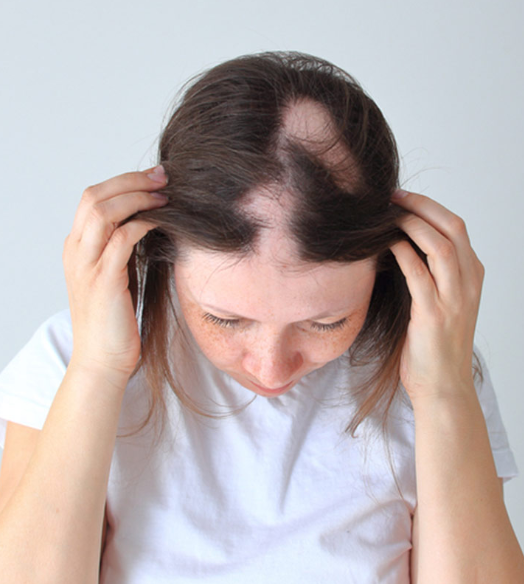
Types of hair loss
Androgenetic alopecia.
Androgenetic alopecia(progressive hair loss) is a general term for male-pattern or female-pattern hair loss, which is a type of hair loss and a genetic disease mainly caused by iron deficiency anemia and thyroid disease.
Male diagnosed with androgenetic alopecia often experience hair loss from the temples and top of the head, while female patients with androgenetic alopecia usually have thinning hair all over their heads.
As age increases, androgenetic alopecia is more likely to occur, but it may also begin to occur at any time after puberty.
Many women are diagnosed with androgenetic alopecia after menopause, which may result from hormones changes.
Even treated by medication, androgenic alopecia normally takes 6-12 months to significantly improve new hair growth.
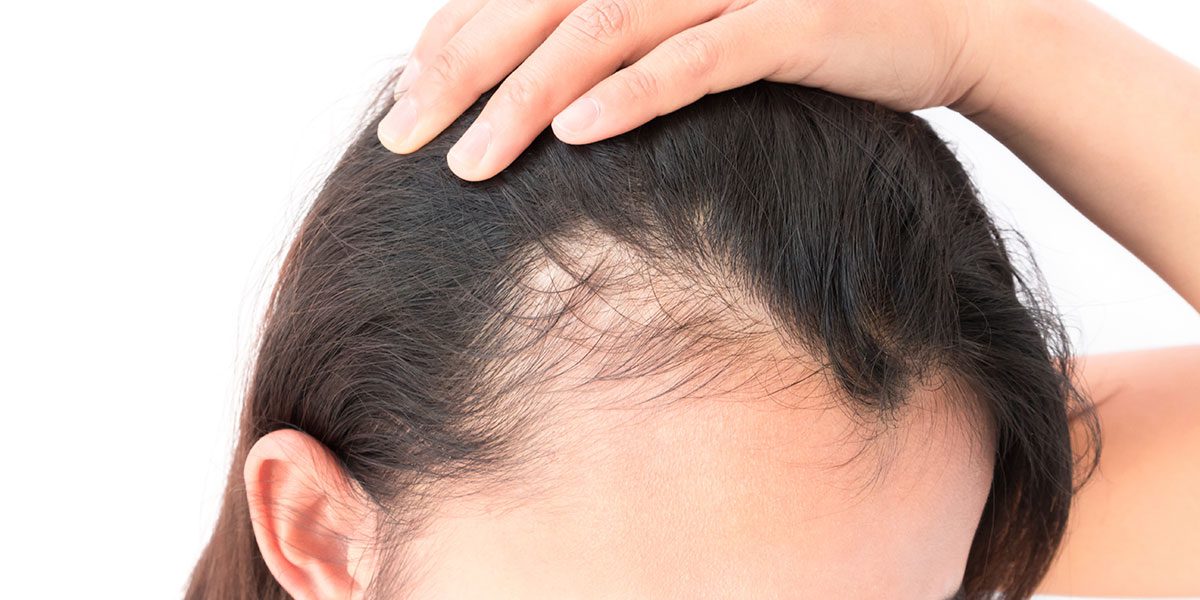
Telogen effluvium.
It is a common type of hair loss that can result from going through severe pressure or physical changes such as pregnancy and rapid weight loss. This is the stage where hair falls out.
Currently, there are treatment methods for reversing hair loss, but hair normally regrows within 3-6 months without the need for specific treatment.
The hair growth period of patients with telogen effluvium will slow down, which means that the amount of hair entering the next two stages will decrease.
In this case, about 30% of the hair follicles will enter the resting period, so the hair will fall off.
When physical or emotional stress leads your hair to enter the resting period too early, telogen effluvium will occur.

Alopecia areata
Alopecia areata is a kind of disease that your immune system attacks your hair follicles and then gives rise to hair loss.
Alopecia areata can occur at any age, especially in children and young people. People of any skin color and gender may come down with alopecia areata.
Patients with autoimmune diseases(a disease that your immune system attacks healthy cells inside your body), such as systemic lupus erythematosus, scleroderma, or vitiligo, are more likely to come down with alopecia areata.
Sometimes, hair regrowth requires help. If left untreated, hair loss may remain unchanged or get worse.
If treated properly, it is likely to regrow hair in about a month, but it normally takes several months to complete growth.
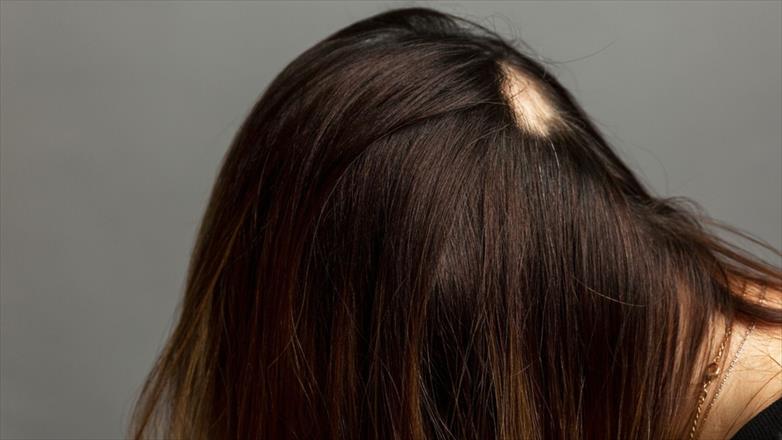
Scarring alopecia
It is another one of the types of hair loss triggered by damaged hair follicles. Infection, chemicals-exposure, or autoimmune diseases may lead to scarring alopecia.
It may be permanent alopecia because without healthy hair follicles, hair cannot regrow no longer.
The patches of scarring alopecia are usually slightly different from alopecia areata because the edges will appear rougher.
The damaged hair follicles occur below the surface of your scalp, so apart from patchy hair loss, nothing else may be visible on the surface of your scalp.
If it can be detected early, inflammation treatment can be adopted to prevent or at least retard the development of hair loss.
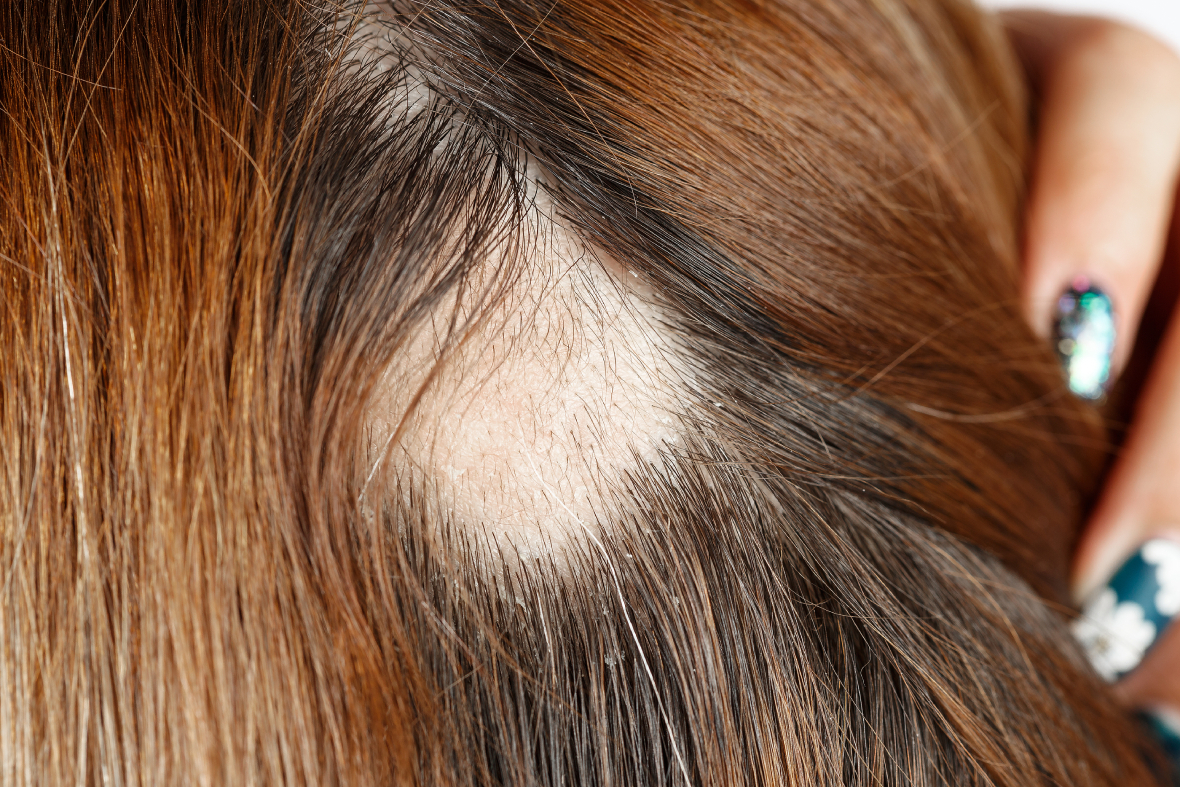
Causes of hair loss
Related: Hair Damage: What Causes It And How To Deal With It
Hair Loss In Women: What Causes It And How To Solve It?
Hereditary hair loss.
Hereditary hair loss is the most common cause of hair loss occurs with aging. It includes androgenic alopecia, male-pattern hair loss, and female-pattern hair loss.
Hereditary hair loss usually occurs with receding hairlines and baldness in males, and thinning hair on the top of the head in females.
Therefore, ask your parents if there is any family history in your family, including whether any relatives suffered hair loss and the age of his/her being diagnosed with hair loss.

Hormonal changes.
Some types of hormonal changes can also give rise to hair loss.
Menopause.
As hormonal changes such as the reduction of estrogen and progesterone levels occur during the menopause period, it is common that your hair thins gradually.
Pregnancy.
Pregnancy, especially childbirth, can trigger hair loss. Hair loss is most likely to occur around 3 months after childbirth because of the decrease of estrogen levels in this period.
Aging.
Hormonal changes when aging are another cause of hair loss. Besides, in some cases, hair follicles will stop growing hair at last.
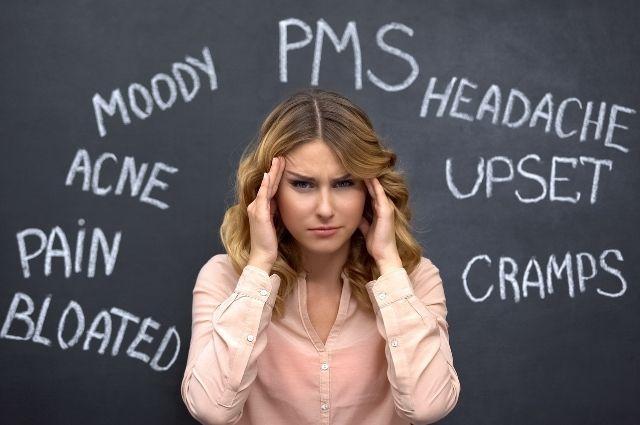
Nutritional inadequacy.
Lack of vitamins and minerals such as protein, biotin, zinc, and iron can trigger hair loss, as they are conducive to the hair growth and cellular metabolism.
Vitamin deficiency or eating fast food for a long time can both lead to deficiencies in various nutrient, thus giving rise to hair thinning.
Nutritional deficiency may take a toll on hair structure and hair growth, which can lead to diffuse hair loss, androgenetic alopecia and alopecia areata.

Physical or emotional stress
Whether physical induced or emotional induced, stress can affect almost all aspects of our body health, not to mention our hair.
When tortured by stress, the level of hormone cortisol will increase, which can have a negative effect on the hair growth.
Because it can redirect the energy we need to other organs or tissues such as muscles and brain, thus influencing nutrient absorption and disrupting hormone levels.
It may lead to a kind of hair growth disorders called telogen effluvium.
In this case, once the sources of stress are removed, you can regrow hair gradually.

Chemotherapy
Unavoidably, some certain medications can cause hair thinning.
During cancer treatment, to prevent tumors from spreading to other organs, chemotherapy drugs will inevitably kill some cells in the body.
However, due to the rapid growth of cells in hair follicle, chemotherapy induced alopecia will occur.
Generally speaking, drug induced hair loss is temporary. Therefore, after a few months of cancer treatment, your hair will regrow.

Treatments of hair loss
You may be able to reverse hair loss, or at least prevent further hair loss during medical treatments or daily care.
Related: A Guide To Hair Loss In Women: Causes And Treatment Of Thinning Hair
Here are some treatment options you can choose from.
Hair transplant
In common permanent hair loss, normally only hair on the top of the head is thinning. Hair transplant or hair repair surgery can give full play to your remaining hair.
In hair transplant surgery, doctors will normally remove hair from the back of your head and transplant it to your bald spots.
Sometimes a larger piece of scalp that contains multiple hair groups will be removed. You will not need to be in hospital, but it may be too painful to bear, so you may have to use sedatives to relieve discomfort.
And you may need further surgeries to achieve the desired effect, which will be more costly than other treatment options.
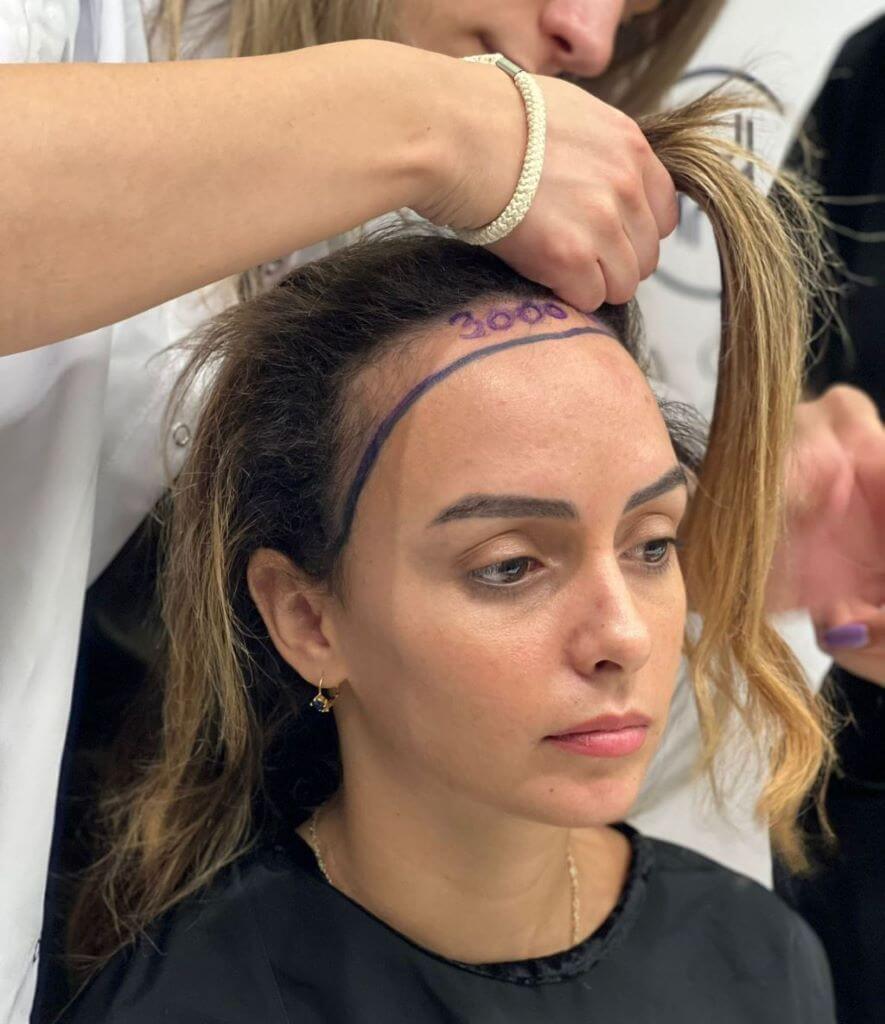
Essential oils
Essential oils are extracted from plants and are mainly used in aromatherapy and alternative medicine, which offer many health benefits.
Apply a small amount of it on your arm and wait for a day to check if there is any reaction. Redness or stinging may indicate an allergic reaction.
Although studies have shown that essential oils are beneficial to health, before starting to use essential oils, it is important to consult professional doctor and do research on the quality of the products.
There are three phases in hair growth: anagen, catagen, and telogen.
Lavender oil can maintain the anagen phase and delay the catagen phase to stimulate hair growth, thus treating hair loss to some degree.
While peppermint oil can induce hair to enter the anagen phase early to promote hair growth and then help the lost hair grows back.

Medication
The Food and Drug Administration has approved only two drugs for hair loss treatment: topical minoxidil and finasteride.
Topical minoxidil is used to stimulate hair growth and relieve hair shedding, which is most suitable for people under 40. Within a few months after discontinuing it, most new hair will fall off.
Finasteride is used to slow hair loss especially caused by male pattern baldness or androgenic alopecia and increase hair growth on the hair scalp.
But pregnant women, lactating women, and children should not use finasteride!
Remember to be cautious when choosing other drugs as their safety may not have been researched on.
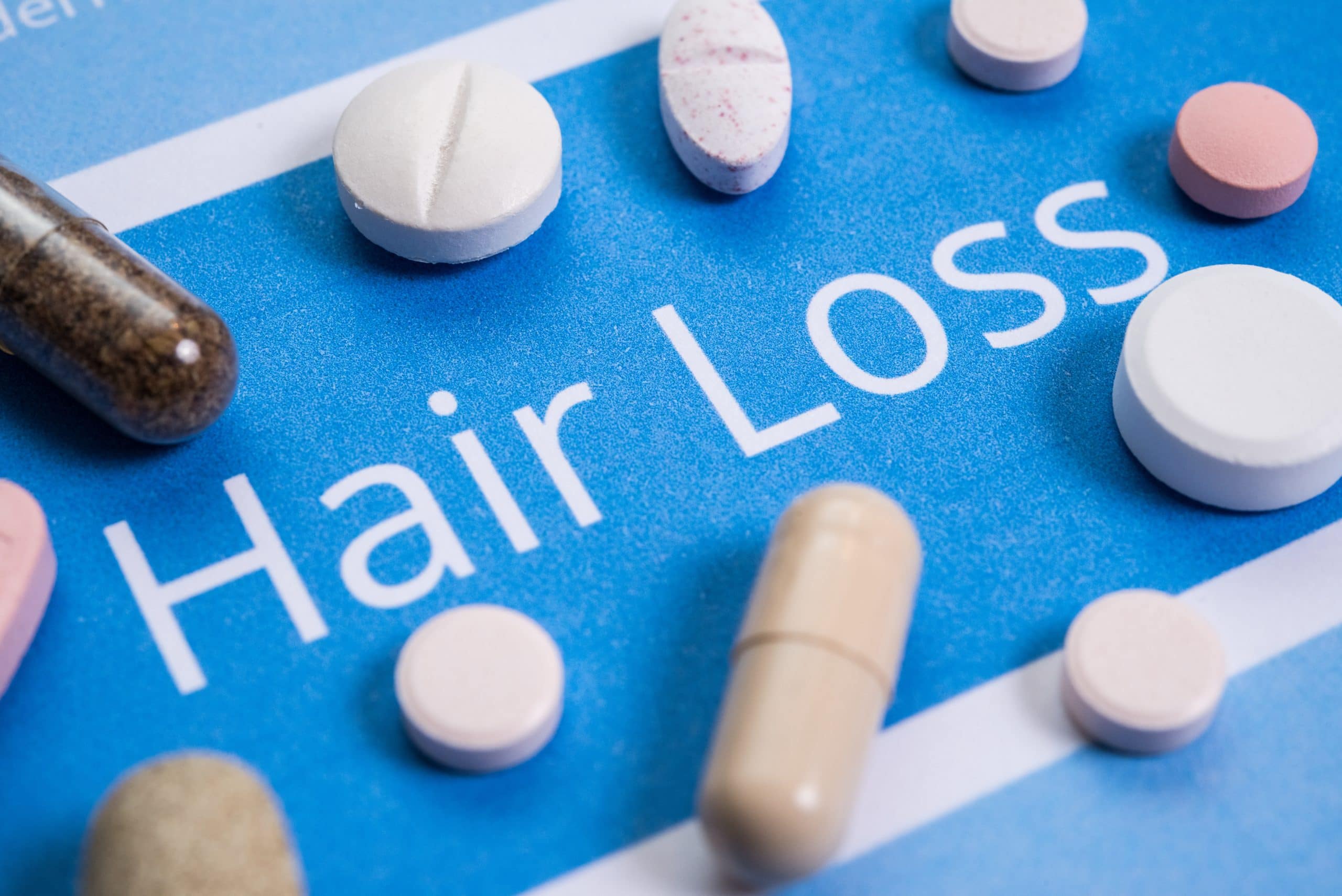
Purchase a wig
On top of medical treatments, purchasing a wig that is suitable for you is another nice choice.
Related: Wig Shopping 101: Your Ultimate Guide To Finding The Perfect Fit!
The Most Comprehensive Guide For Hair Toppers 101
Wigs will be helpful when you notice hair loss occurs on your head, which can cover up your broken hair or receding hairline and increase your hair thickness.
While a high-quality wig can be a little expensive for you, they are actually cheaper than other hair loss treatment, which can be used for a long period.

Final Thoughts
Losing hair is not all bad news if you receive early treatment to slow hair loss and promote hair growth. If you want to learn more about hair loss and hair growth, please visit https://www.wigshe.com/, which will give you a lot of practical knowledge. Hope you can grow more hair with the help of us! We warmly welcome you!
Images credit: Instagram, Google, Pinterest.
